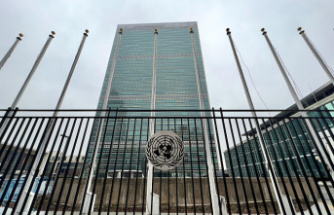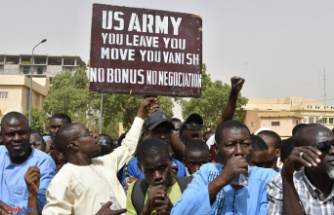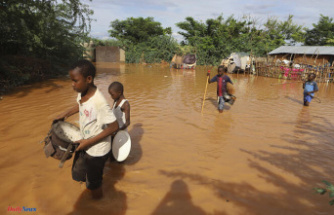So close, and yet so far. At a time when the heat waves sweeping across Europe are causing a stir in the media, Africa is also burning in almost general silence. For several weeks, devastating fires have been ravaging crops and threatening the already fragile food stability of some countries on the continent. A situation catalyzed by two phenomena: the slash and burn technique, still massively popular with local farmers, and global warming, which disrupts the monsoons and increases drought phenomena, in regions already known to be particularly arid.
Thus, slash-and-burn agriculture - an efficient and inexpensive agricultural practice consisting of burning land to clear existing vegetation and fertilizing the soil with the ash thus created - fuels fires in central Africa in the midst of drought. However, these fires, and the forest fires they cause "constitute the largest source of black carbon in the world, a threat to human health and the environment", recalls the United Nations Environment Program (UNEP) . In the Democratic Republic of Congo (DRC), the deforestation caused by this practice and by the production of charcoal is such that the country has lost nearly 500,000 hectares of tropical forest in 2020 alone, reports Global Forest Watch, while that the Congo Basin rainforest plays a key role in the fight against global warming, absorbing around 4% of the world's annual CO2 emissions.
Black carbon, resulting from burning, also favors the increase in drought episodes, which follow one another in recent years, and reach unprecedented levels in 2022, particularly in the Horn of Africa, but also in several countries of the Maghreb. In addition, the practice of burning disturbs the monsoons. "During this period, we have floods here and there, and during the dry season, we have heat waves which are longer and more intense", confided recently the climatologist specialist in Africa Arona Diedhiou on RFI. The latter also feared that these climatic changes would lead football organizations to have to reschedule the African Cups of Nations in 2023 (Côte d'Ivoire) and 2025 (Guinea), scheduled outdoors over the period June-July.
Another fertile ground for episodes of extreme heat and the spread of fires: global warming, which is hitting the African continent hard. While Africa, home to 20% of the world's population, emits only 3% of greenhouse gas emissions each year, it is on the front line of rising temperatures. According to forecasts, a rise of 2°C globally by the end of the century could even translate into a rise of 3.6°C on the African continent. At present, the most affected region is East Africa, which is experiencing the worst drought in more than forty years, which is likely to be prolonged, in the absence of a rainy season for the fifth consecutive year. , as recently recalled by the World Meteorological Organization (WMO).
“East Africa and in particular parts of Somalia, Djibouti, Ethiopia and Kenya are experiencing the driest conditions and highest temperatures since satellite records began,” said in a statement. the same vein alerted UNEP. In Ethiopia alone, nearly 10 million people, including 4.4 million children, are in emergency situations in drought-affected areas, where malnutrition rates are alarming. "The threat of famine looms over East Africa," Clare Nullis, spokeswoman for the World Meteorological Organization (WMO), said recently, as an estimated 16.7 million people today number of people facing acute food insecurity in East Africa.
In the Maghreb too, the situation is worrying, while the region is plagued, like many European countries, by an episode of extreme heat favoring forest fires. A UN report published last February also estimates a 30% increase in the risk of occurrence of "extreme fires" by 2050, due to global warming, and 50% by the end of the century. In Morocco, where temperatures go up to 46 degrees in places, six devastating fires have hit the country since July 13, displacing 1,325 families from 19 villages surrounded by flames and inducing the destruction of approximately 4,660 hectares in the province of Larache located in the north of the country, the main focus of the fires. "Four army Canadair water bombers and four spray planes have been mobilized," notes the Moroccan newspaper Le Desk. In the grip of successive episodes of drought in recent years, Morocco is now classified by the IPCC as one of the countries "close to the threshold of severe water stress".
In Algeria, two people lost their lives last June in forest fires in Sétif, in the north of the country, a region which had experienced particularly deadly fires last year. To avoid the 90 deaths in the summer of 2021, Algeria even rented a Russian water bomber plane for a period of three months, specifies the local daily TSA. Finally, in Tunisia, the region of Jendouba, in the north-west of the country, recorded three forest fires last week and this "without counting the numerous outbreaks of fire, in the localities of Balta Bouaouene and Boussalem", reports the daily. Digital Tunisia. Libya and Algeria also sent equipment yesterday to "support Tunisia's efforts in its fight against fires".
A little further south, some countries in the Sahel are also facing large-scale fires. In the far north of Chad, for example, three fires were recorded by the authorities in palm groves this month. A particularly critical situation when the date harvest is the main economic windfall of this arid province of Borkou. Indeed, as fires spread very quickly, farmers often lose a considerable part of their yields.












